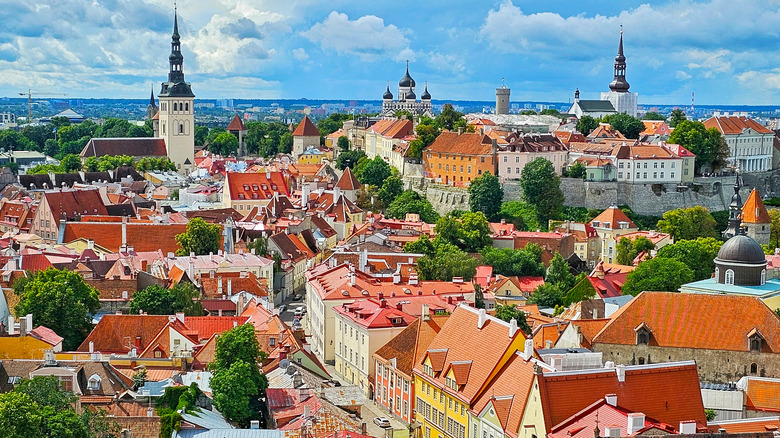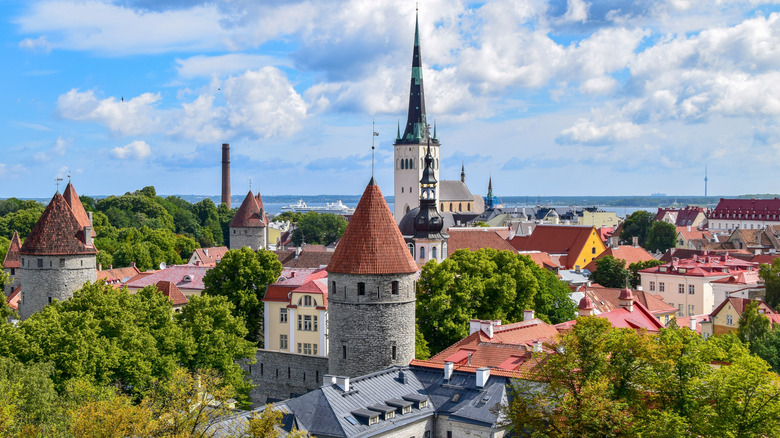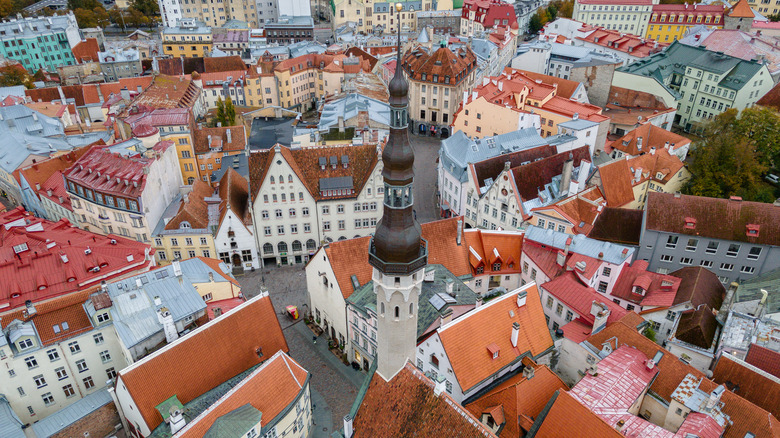The Underrated European Capital City Rick Steves Calls 'Proudly Unique'
Though many travelers to Europe set their sights on visiting popular cities like Rome, Paris, and Madrid, there are places out there that are just as historic, yet hardly visited. For most of the 20th century, one city was barely on travelers' radar, but today it's reemerged as one of Europe's most compelling smaller cities, and one of the must-visit cities in the Baltics.
This is Tallinn, the capital of Estonia, a historic and medieval city whose Old Town stands among the best-preserved in Europe. Though the journey is only a small distance from both Helsinki and Stockholm, a visit here feels like you've crossed not just a body of water, but a cultural border. Rooted in medieval Europe and shaped by Nordic and Russian influences, Tallinn offers travelers a unique experience where Old World architecture meets post-Soviet resilience and a distinctly modern outlook.
Perched on the edge of the Baltic Sea, this beautiful city offers visitors a glimpse into a perfectly preserved medieval center that still pulses with local life, and a dynamic, forward-thinking culture just beyond its ancient stone walls. As Rick Steves puts it in "A Quick Trip to Tallinn," Estonia's post-communist chapter has been a success story, and since 1991, its capital has westernized at an astounding rate, all while holding tight to its old-school charm." The city's compact size makes it ideal for short visits, yet its depth of history encourages visitors to linger. Within a few city blocks, you'll find remnants of feuding medieval towns, Soviet-era reminders, and signs of a fast-developing digital society. The contrast is part of what makes Tallinn so compelling. As Steves puts it: "Tallinn is both Nordic- and Russian-influenced, and a visit here is a fun peek into a proudly unique and resilient nation."
Explore Tallinn's medieval Old Town
At the heart of the city lies its medieval Old Town, a UNESCO World Heritage site enclosed by walls and dotted with 15th-century merchant houses, spires, and cobbled streets. Inside those walls, it's easy to get pleasantly lost among the narrow passageways, gothic churches, and colorful merchant houses that date back to the Hanseatic trading era.
Start your visit at Town Hall Square, the heart of the lower town. This broad plaza has served as a gathering place for centuries, and still pulses with energy today, though its cast of characters has changed. Where once there were "criminals chained to pillories for public humiliation and knights showing off in chivalrous tournaments; today it's full of Scandinavians and Russians savoring cheap beer, children singing on the bandstand, and cruise-ship groups following the numbered paddles carried by their local guides." You can climb the 15th-century town hall tower for panoramic views or visit the Tallinn City Museum, located inside town hall.
Just uphill lies Toompea, Tallinn's upper town and historical seat of power. This part of the city feels more formal, with wide stone staircases leading up to the pink-colored Toompea Castle, now home to Estonia's Parliament. Directly across stands the Alexander Nevsky Cathedral, a striking Russian Orthodox church that commands attention, but not always affection. It was "clearly designed to flex Russian cultural muscles during a period of Estonian national revival," Steves writes. A short walk from the cathedral brings you to the Vabamu Museum of Occupations and Freedom, offering a sobering look at Estonia's 20th-century experience under Soviet and Nazi control. The museum's exhibits document forced labor, censorship, and exile — but also highlight the country's eventual path to independence.
Visit popular sites and beyond the city walls
If you're only in Tallinn for a day, or want to take your time, these sights form a logical circle — starting from the lower town, and looping up into Toompea. But if you have extra time, consider exploring beyond the city walls. Steves suggests heading towards the "ambitious nautical-aviation-military museum called Seaplane Harbor, the Rotermann Quarter for its cutting-edge architecture, the Estonian Open-Air Museum for folk culture, or Kuma Art Museum for Estonian art, and a walk in nearby Kadriorg Park."
If you're staying overnight, take advantage of the early mornings or evenings to enjoy the Old Town without the daytime cruise crowds. "Those who spend the night, however, are rewarded with the option of touring the Old Town early or late, when it's much less crowded," Steves advises. If you do decide to spend the night, consider a hotel within or just outside the Old Town for easy access to the sights.
Only two hours by ferry from Helsinki, Tallinn is an easy day trip. Stockholm also offers overnight ferries departing daily through companies like Tallink or Viking Line. The Tallinn Airport is small but still well-connected to major European cities, and a taxi or tram can take you to the city center in around 15-20 minutes. The Old Town itself is very walkable, and most sights are within a 10-20-minute radius. For outlying areas such as Kadriorg, Telliskivi, or the Open-Air Museum, public transportation is an efficient and inexpensive way to get around the city. Tallinn may be small in size, but it offers big rewards for curious travelers. Whatever the duration of your visit, it's steeped in history, resilience, and modernity that stays with you long after you leave.


